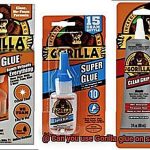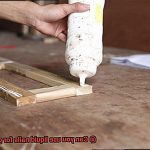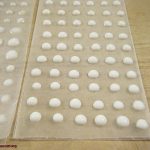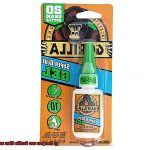Whether we’re strutting along sandy shores or pounding the pavement, these versatile sandals are always there for us. But let’s face it, even our favorite flip-flops can start to unravel over time. So, what’s a sandal lover to do? Well, rumor has it that super glue might just be the secret weapon we need.
Now, I know what you’re thinking – super glue on flip-flops? It sounds crazy, right? But desperate times call for creative measures. In this blog post, we’re diving headfirst into the world of DIY shoe salvation. We’ll uncover whether a little dab of super glue can work wonders and give your beloved flip-flops a new lease on life.
So grab your worn-out sandals, settle into a cozy spot, and get ready to discover if this adhesive superhero is the answer to all your footwear woes. Stick around (pun totally intended.) as we explore whether super glue and flip-flops are a match made in sandal heaven.
What is Super Glue?
Contents
- 1 What is Super Glue?
- 2 What are Flip-Flops?
- 3 Factors to Consider When Using Super Glue on Flip-Flops
- 4 Advantages of Using Super Glue on Flip-Flops
- 5 Disadvantages of Using Super Glue on Flip-Flops
- 6 Cleaning and Preparing the Surface for Bonding
- 7 Applying the Super Glue
- 8 Alternatives to Using Super Glue on Flip-Flops
- 9 Conclusion
Super glue, also known as cyanoacrylate adhesive, is a remarkable adhesive that has become a staple in many homes and workplaces. Its fast-acting nature and strong bonding capabilities make it the go-to solution for quick repairs and DIY projects. But what exactly is super glue and how does it work?
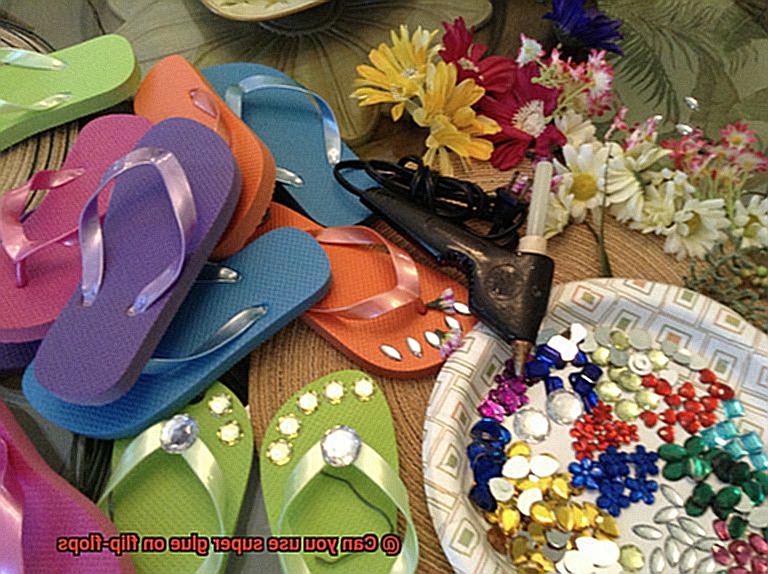
Super glue is a single-component adhesive that cures rapidly when exposed to moisture in the air. It contains cyanoacrylate, a clear liquid that polymerizes quickly to form a hard and rigid bond. This means that as soon as you apply super glue to a surface, it starts to set and create a strong connection within seconds.
This quick-setting feature makes super glue highly convenient for various applications where immediate adhesion is required. Whether you’re fixing a broken toy, repairing jewelry, or putting together small electronic components, super glue gets the job done swiftly.
Super glue is versatile and can bond a wide range of materials, including plastic, metal, rubber, ceramics, and even glass. However, it’s important to note that not all materials are suitable for super glue. Porous surfaces or materials that are constantly exposed to water or extreme temperatures may not provide the best results.
When using super glue, it’s crucial to handle it with caution. The adhesive can cause skin irritation and may bond skin together if not used properly. It’s recommended to wear protective gloves when working with super glue and avoid contact with your eyes or mouth.
In case of accidental skin bonding, don’t panic. Simply soak the affected area in warm soapy water or use a special solvent designed to dissolve cyanoacrylate. With proper care and following safety guidelines, you can safely utilize super glue for all your bonding needs.
In conclusion, super glue is a fast-acting adhesive that forms strong bonds between various materials. Its quick-setting nature and ability to bond within seconds make it an indispensable tool for small repairs and DIY projects. Just remember to handle it with care and follow the safety guidelines to ensure a successful and safe bonding experience.
What are Flip-Flops?
Flip-flops, the very mention of these iconic shoes instantly transports us to sandy beaches, lazy summer days, and carefree vibes. But have you ever wondered about the history and purpose of these beloved footwear? Well, buckle up, my friends, because we’re about to dive into the fascinating world of flip-flops.
In essence, flip-flops are a type of footwear that features a flat sole and a Y-shaped strap that goes between your big toe and second toe. Made of rubber or plastic materials, they offer lightweight comfort and easy slip-on convenience. Perfect for those moments when you just want to kick off your shoes and embrace a relaxed style.
The origins of flip-flops can be traced back to ancient civilizations. Evidence of similar footwear has been found in Egypt, China, and Japan thousands of years ago. It’s incredible to think that this humble design has stood the test of time and continues to be a staple in our modern wardrobes.
Today, flip-flops are popular all around the world, especially in warm climates and beach destinations. They provide that laid-back vibe we all crave when we’re on vacation or soaking up the sun. But don’t be fooled, my friends. Flip-flops aren’t just for the beach. With their wide range of styles, colors, and patterns, they can be worn in various settings – from running errands to casual outings with friends. Some fashion-forward flip-flops even make appearances at more formal events. Talk about versatility.
However, it’s important to note that while flip-flops are great for quick and convenient wear, they may not provide adequate support or protection for activities that require more stability or foot control. Prolonged walking or intense physical activities might call for more substantial footwear with arch support and cushioning.
Factors to Consider When Using Super Glue on Flip-Flops
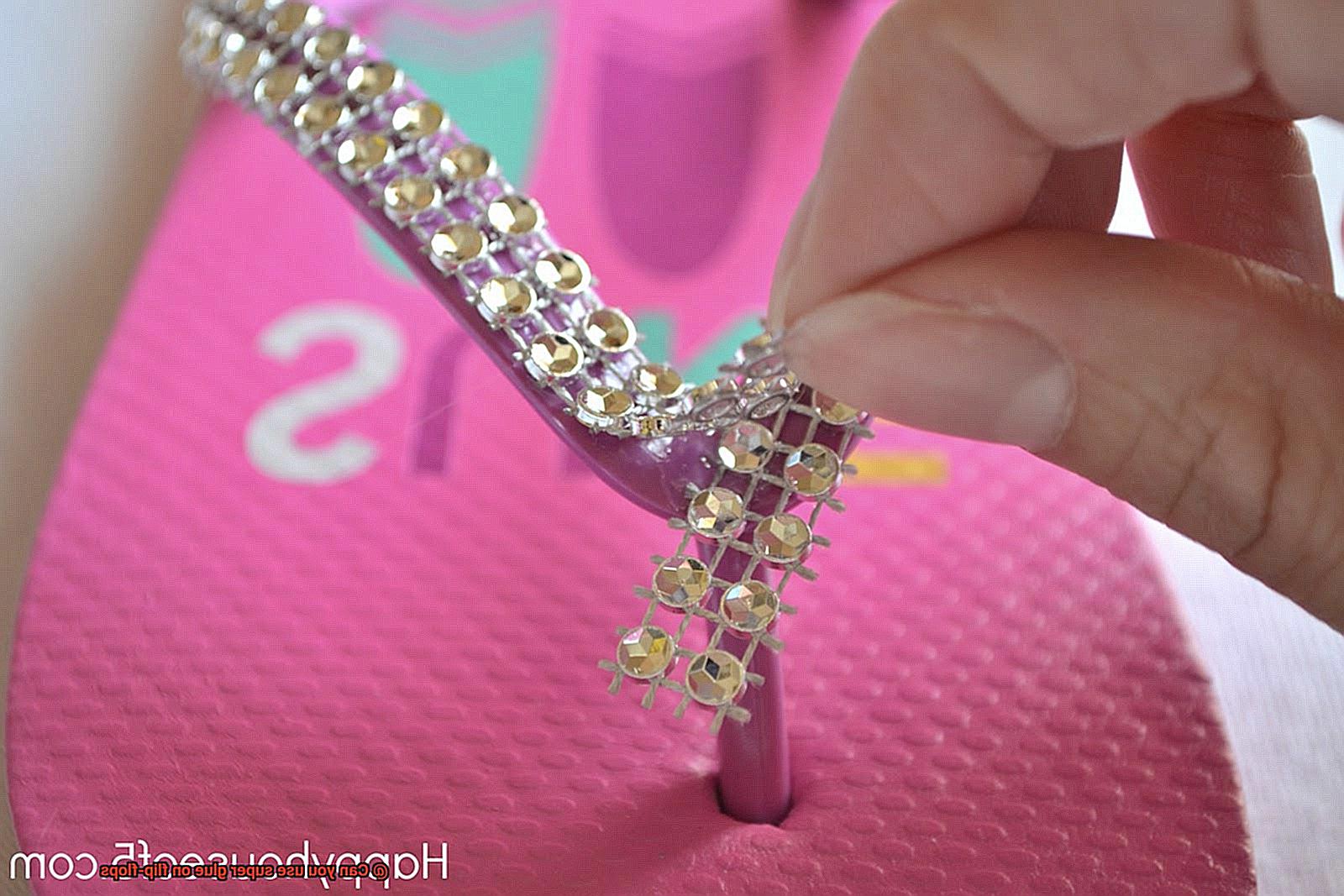
When it comes to using super glue on flip-flops, there are several factors that you need to consider in order to ensure a successful repair. Let’s dive into these factors and explore how to use them effectively.
The first factor to consider is the material of your flip-flops. Super glue works best on materials such as rubber, plastic, and vinyl. These materials provide a suitable surface for the adhesive to bond to. However, if your flip-flops are made of leather or fabric, super glue may not be the best choice. It may not adhere properly and result in a weak bond that won’t last long.
Next, take a good look at the condition of your flip-flops. If they are worn out or damaged, super glue may not be able to work its magic effectively. The adhesive requires a smooth surface to adhere properly, so make sure your flip-flops are in decent condition before attempting any repairs.
Now, let’s talk about the type of super glue to use. There are different varieties available, each with its own unique properties. Look for a super glue that is specifically designed for flexible materials like rubber or plastic. These types of super glue provide better adhesion and flexibility for your flip-flops.
When it comes to applying the adhesive, cleanliness is key. Make sure both surfaces you’re bonding are clean and free from any dirt or moisture. You can use a mild detergent or rubbing alcohol to wipe them down. Once they’re dry, apply a small amount of super glue to one surface and firmly press the two surfaces together. Hold them in place for a few minutes until the bond sets.
Lastly, safety should always be a priority. Super glue contains strong chemicals that can irritate your skin or eyes. So be sure to work in a well-ventilated area and avoid any contact with your skin or eyes. If you do happen to get some on your skin, rinse it off with water and seek medical attention if needed. And of course, keep that super glue out of reach of curious little ones.
Advantages of Using Super Glue on Flip-Flops
We’ve all been there – you’re strolling along the beach, enjoying the warm sand between your toes, when suddenly disaster strikes. Your trusty flip-flops decide to give up on you, leaving you stranded with a broken strap or a detached sole. Fear not, my friends, because I have the ultimate solution – super glue. In this article, we’ll explore the advantages of using super glue to fix your beloved flip-flops.
Advantage 1: Quick and Easy Fix
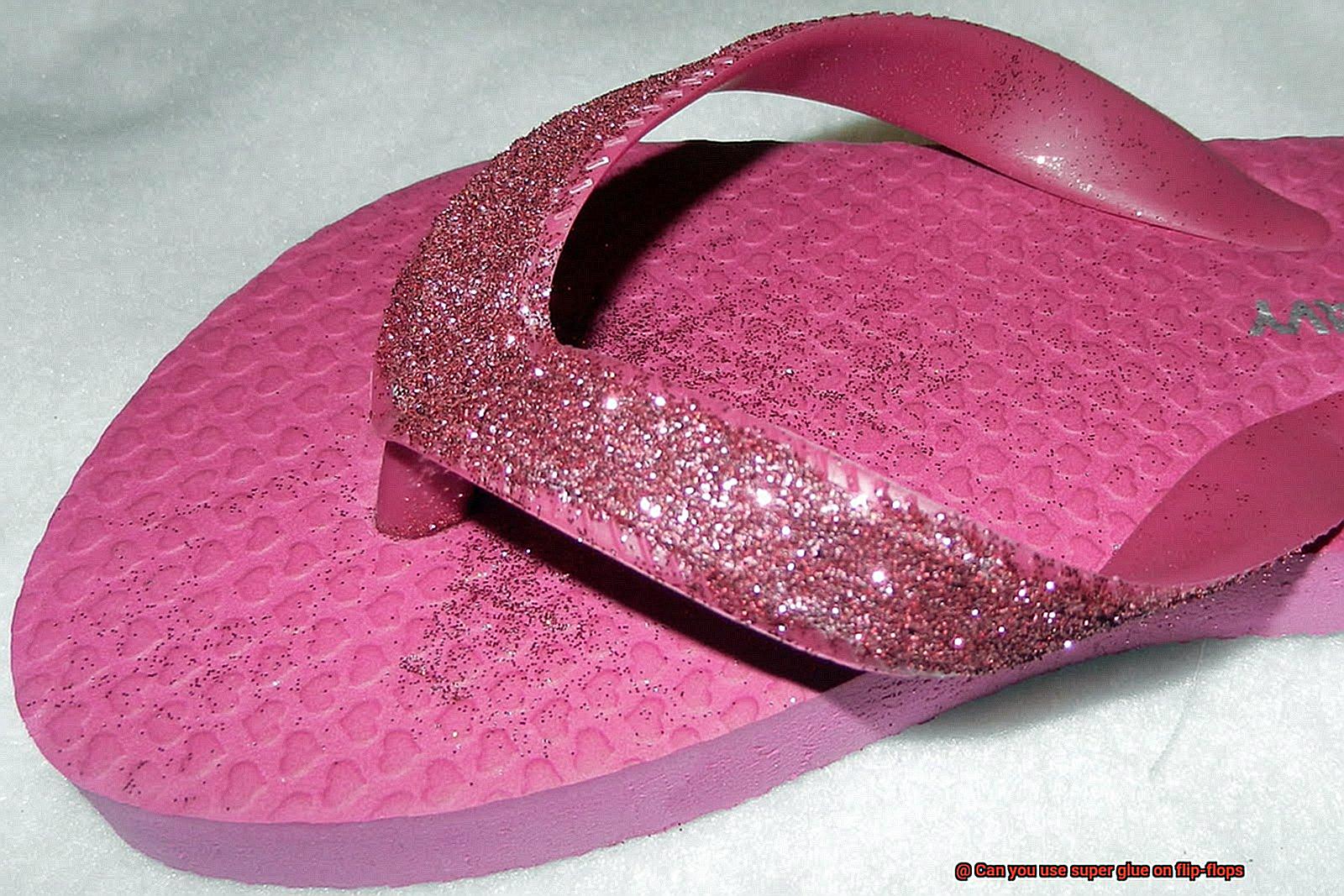
When it comes to fixing your flip-flops, time is of the essence. With super glue, you can kiss those long waits goodbye. Instead of heading to the store or waiting in line at a repair shop, simply reach for that trusty tube of super glue. A few drops and a little bit of patience are all it takes to get your flip-flops back in action within minutes. No more waiting or spending unnecessary time and effort searching for a replacement pair.
Advantage 2: Incredible Bonding Strength
Super glue isn’t called “super” for nothing. Once it sets, it creates an unbreakable bond between surfaces, ensuring your flip-flops can withstand everyday wear and tear. Say goodbye to flimsy repairs that fall apart after a few uses – super glue means business when it comes to durability. It forms a strong connection that will keep your flip-flops intact for a long time.
Advantage 3: Versatility at its Finest
Flip-flops come in all shapes, sizes, and materials. Thankfully, super glue is a versatile adhesive that can handle them all. Whether your flip-flops are made of rubber, plastic, or foam, super glue will work wonders in bringing them back to life. No need to worry about compatibility issues – super glue has got you covered. Its ability to bond various materials makes it a go-to solution for any type of flip-flop repair.
Advantage 4: Water-Resistant Wonder
We all know that flip-flops and water go hand in hand. Whether you’re hitting the pool or getting caught in a summer rain shower, your repaired flip-flops need to stay intact. Fortunately, super glue is resistant to water and moisture, ensuring your flip-flops remain securely glued even in wet conditions. No more worrying about your repair job washing away – super glue can handle it all. It provides a reliable barrier against water damage, giving you peace of mind while enjoying your favorite water activities.
Disadvantages of Using Super Glue on Flip-Flops
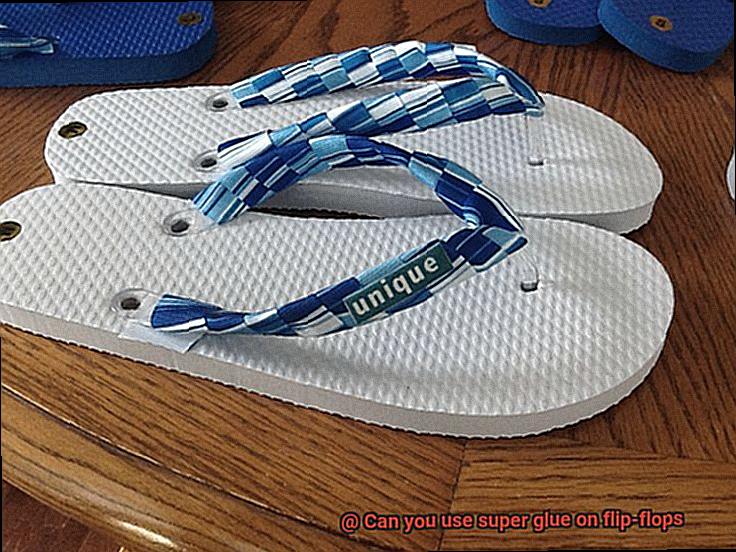
When it comes to fixing your worn-out flip-flops, using super glue may seem like a quick and easy solution. However, before you embark on a sticky adventure, it’s crucial to understand the potential drawbacks. Let’s explore the disadvantages of using super glue on flip-flops.
- Weak Bond: Super glue is not specifically designed for bonding rubber or plastic materials commonly used in flip-flops. As a result, the bond it creates may not be as strong or durable as you’d hope. While it might hold for a short time, it’s likely to give way under the stress and strain of outdoor activities like walking or running.
- Messy Affair: Super glue has a tendency to run and drip, leading to accidental spills and unsightly stains on your beloved flip-flops. No one wants their stylish footwear ruined by glue marks that are hard to remove.
- Potential Harm: The chemical composition of super glue can cause irritation, burns, or even allergic reactions if it comes into contact with your skin. Applying it directly onto your flip-flops increases the risk of discomfort or burning sensations on your feet.
- Limited Adjustments: Super glue dries quickly, leaving little room for error. Once it sets, adjustments or repositioning become nearly impossible. Crooked or misaligned flip-flop parts are far from desirable.
- Difficult Removal: If you change your mind and want to remove the super glue, good luck. The bond created by super glue is notoriously strong and may require harsh solvents or scraping to remove. This not only risks further damage to your flip-flop material but also becomes a tedious task you’ll regret undertaking.
- Voided Warranty: Using super glue on your flip-flops may void any warranty or guarantee provided by the manufacturer. If you experience any issues with your footwear, the manufacturer may not be liable for repairs or replacements if they discover that super glue was used.
Cleaning and Preparing the Surface for Bonding
Fear not, we have the perfect solution. Super glue can work wonders in fixing your favorite footwear, but before you dive into the adhesive abyss, it’s crucial to prepare the surface properly for a bond that will withstand any adventure. In this blog post, we’ll guide you through the process of cleaning and preparing your flip-flops to ensure a successful and long-lasting application of super glue.
Step 1: Banish Dirt and Debris:
First things first, give those flip-flops a royal treatment by brushing or wiping away any lingering dirt or debris with a soft cloth. Pay close attention to the nooks and crannies where pesky particles tend to hide. We want a clean canvas for our adhesive masterpiece.
Step 2: Say Goodbye to Grease and Grime:
Now it’s time to bid adieu to oils and residues that could sabotage our glue’s mission. Create a powerful potion by mixing a mild detergent or soap with water, then use a cloth or sponge to gently massage the surface of your flip-flops. Rinse away any remnants of soap thoroughly, leaving no trace behind. This step is vital to ensure an unobstructed bond between the glue and your trusty flip-flops.
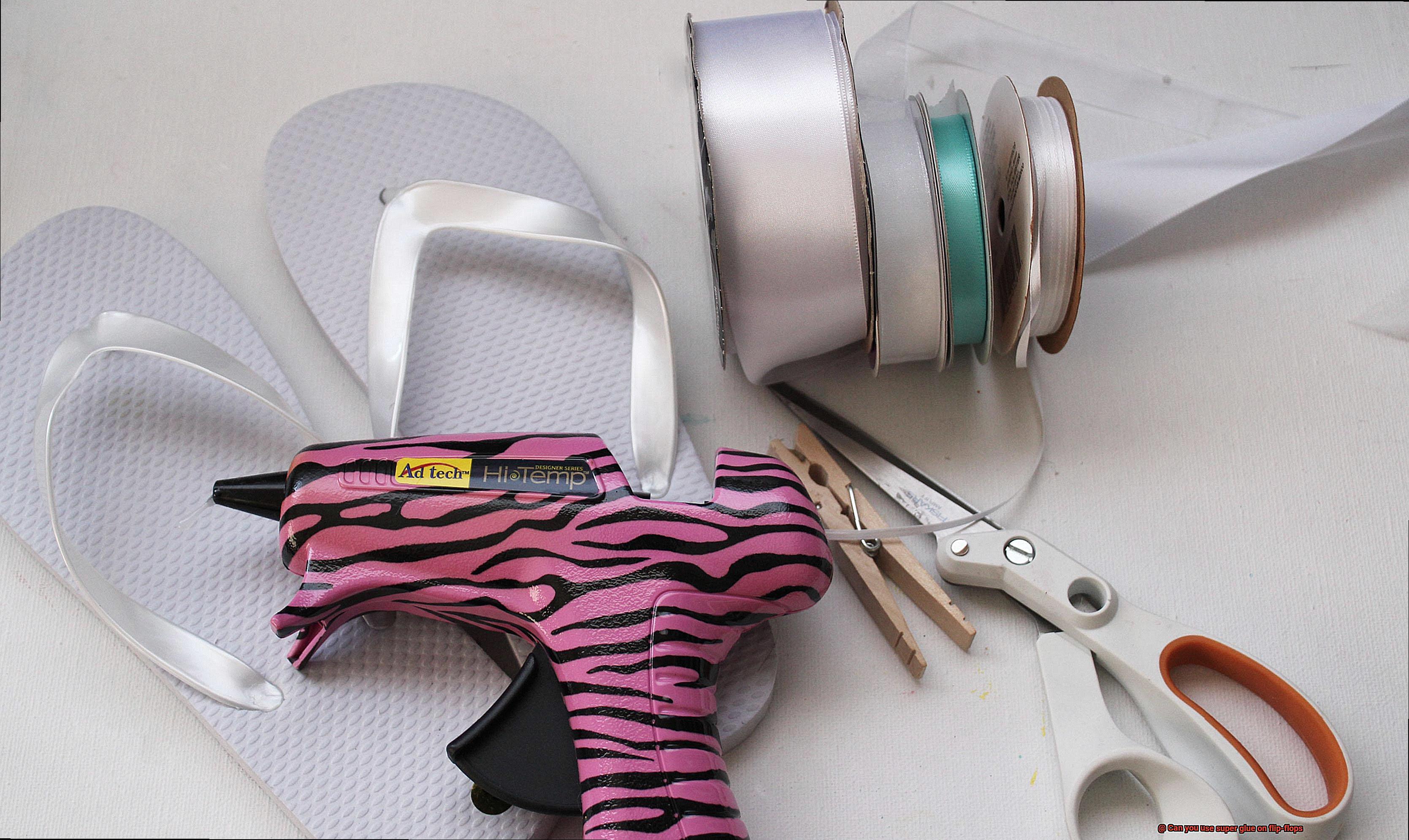
Step 3: Roughen Up…Gently:
Smooth flip-flop surfaces don’t always provide optimal grip for super glue. If needed, lightly sand the surface with fine-grit sandpaper or employ an abrasive pad to give it some texture. Remember, a gentle touch is key here; we don’t want to weaken our precious footwear.
Step 4: Patience is Our Virtue:
Before we embark on the gluing adventure, make sure your flip-flops are completely dry. Moisture can dampen the strength and durability of our adhesive bond. Allow ample time for your flip-flops to air dry naturally or use a clean cloth or paper towel to tenderly pat them dry. Remember, patience now will save you from disappointment later.
Applying the Super Glue
With the power of super glue, you can give them a new lease on life and keep them by your side for many more sunny days. As an expert in adhesive applications, I’m here to guide you through the process of applying super glue to your beloved flip-flops.
First things first, cleanliness is key. Before diving into the gluing process, it’s essential to clean the surfaces that need to be bonded. We don’t want any dirt, dust, or debris compromising the effectiveness of the glue. Grab a mild soap and water solution or some rubbing alcohol and gently wipe away any oils, dirt, or residue that may be lingering on your flip-flops.
Once the surfaces are squeaky clean, it’s time to let them dry completely. Moisture is not our friend when it comes to bonding, so make sure those flip-flops are bone dry before proceeding.
Now, here comes the magic moment – applying the super glue. Remember, a little goes a long way with this powerful adhesive. Apply a small amount of super glue to one of the surfaces you want to bond. Be precise and avoid using excessive amounts as it could lead to messy results.
Next, press the surfaces firmly together and hold them in place for at least 30 seconds. This will ensure a strong bond. If possible, use clamps or heavy objects to apply even pressure across the glued area. We want that glue to work its magic.
While waiting for the glue to cure and set properly, resist the urge to move or flex your flip-flops. Give them some time to work their adhesive wonders. Once the glue has dried and set, check the bond for any weak spots or areas that need reinforcement. If necessary, apply additional layers of glue and repeat the bonding process.
Now, it’s important to note that super glue is not a permanent fix for all flip-flop issues. If your beloved footwear is severely damaged or has structural issues, it’s best to consult a professional cobbler or consider replacing them altogether. Super glue should be reserved for minor repairs and temporary fixes.
Alternatives to Using Super Glue on Flip-Flops
We’ve all experienced that dreadful moment when our trusty flip-flops decide to break, leaving us in a state of panic. But fear not. While super glue is often our go-to fix in these situations, there are some mind-blowing alternatives that can save the day.
First up on our list of game-changers are shoe repair adhesives. These specialized adhesives are designed specifically for footwear and can bond a wide range of materials commonly found in shoes, including rubber and plastic. With a stronger and more durable bond than super glue, these adhesives ensure that your flip-flops stay intact through countless beach trips and poolside parties.
If you’re seeking even more strength and durability, brace yourself for the two-part epoxy adhesive. This stuff means business. Consisting of two components that need to be mixed together before application, epoxy adhesives pack a punch in terms of strength and can handle even the toughest flip-flop repairs. Just keep in mind that they may require a bit more patience as they take longer to cure compared to other options.
Feeling less committed to a permanent fix? Enter fabric or silicone adhesives. These versatile adhesives are designed to bond flexible materials and work wonders for minor repairs on your favorite flip-flops. While they may not provide as strong of a bond as other alternatives, they’re perfect for less severe damage.
But wait, there’s more. Brace yourself for this mind-blowing revelation: you can actually use heat to seal broken flip-flops. Yes, you heard that right. This method is particularly effective for rubber flip-flops. By applying heat using a heat gun or even a lighter (safety first, folks.), you can melt the rubber slightly and then press the broken parts together. Once the rubber cools down and hardens, it forms a bond so strong that it can withstand all your beach adventures.
And finally, if you’re not the DIY type or if your flip-flops are beyond repair, why not entrust them to the capable hands of a professional shoe repair shop? These experts have the knowledge and tools to mend your flip-flops properly, ensuring a long-lasting fix that will have you strutting your stuff in no time.
Qnid2LcBSO0″ >
Conclusion
Yes, you can use super glue on flip-flops.
It is a quick and easy solution to fix any broken straps or detached soles. Super glue bonds strongly with the rubber material of flip-flops, ensuring a durable repair that will last for a long time.
Within minutes, your flip-flops will be good as new, ready to take you on your next summer adventure.



